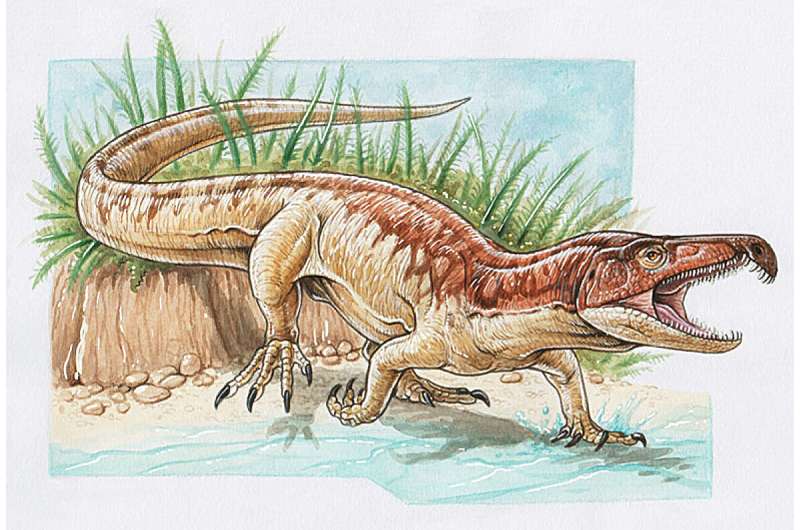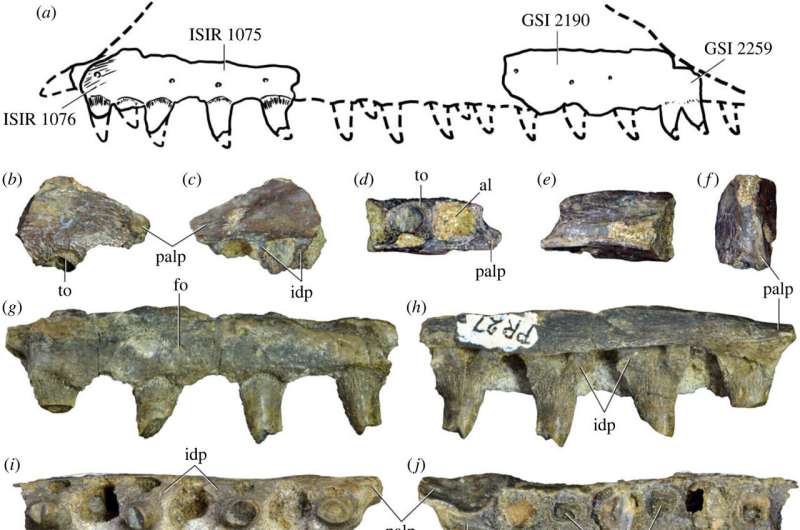October 31, 2023 report
This article has been reviewed according to Science X's editorial process and policies. Editors have highlighted the following attributes while ensuring the content's credibility:
fact-checked
peer-reviewed publication
trusted source
proofread
New proterosuchid species from 250 million years ago found in India

A small international team of paleontologists has discovered a new species of proterosuchid in India dating back 250 million years ago. In their paper published in the journal Royal Society Open Science, the group describes where the fossil was found and how it fits in with other archosauriforms from the period.
Proterosuchids were ancient reptiles that resemble modern crocodiles. Prior research has shown that they were close relatives of archosaurs, the group that includes birds and dinosaurs. Proterosuchids lived on Pangaea, the supercontinent, arising after the Permian-Triassic mass extinction, the largest known extinction in Earth's history.
The fossil was found embedded in rock dated to approximately 250 million years ago—just a couple of million years after the End-Permian extinction (also known as the Great Dying). Study of the fossil showed that it was a new species of proterosuchid, leading the team to give it a name: Samsarasuchus pamelae.
Prior research has shown that proterosuchids lived during the last Permian in what is now Eastern Europe and during the earliest parts of the Triassic in China and South Africa. They had long, thin bodies and crocodile-like snouts. They did have one major difference, however—a pronounced droop at the tip of the upper snout. The droop likely helped the reptiles keep hold of prey.

Prior research has also shown that proterosuchids varied in size, growing to between 1.5 to 4 meters in length. They also had hearing structures that could detect low-frequency sounds. It is also believed they lived mostly in the water.
The new species was discovered in rock formations at a dig site close to the village of Deoli, in a western part of Bengal. The research team found multiple vertebrae fossils back in 2015 and have been studying them since that time—examples of both paratype and holotype were found at the same site, close to one another.
Proterosuchids belong to the clade for archosauriforms, which in addition to long, thin bodies and downturned snout ends, had gracile limb bones allowing for plesiomorphic sprawling locomotion.
More information: Martín D. Ezcurra et al, A new archosauriform species from the Panchet Formation of India and the diversification of Proterosuchidae after the end-Permian mass extinction, Royal Society Open Science (2023). DOI: 10.1098/rsos.230387
Journal information: Royal Society Open Science
© 2023 Science X Network





















